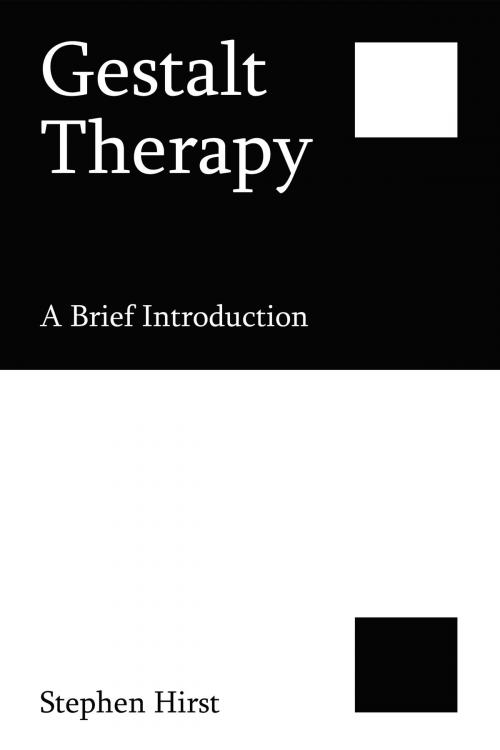Gestalt Therapy: A Brief Introduction
Nonfiction, Health & Well Being, Psychology, Counselling, Psychotherapy| Author: | Stephen Hirst | ISBN: | 9781310739620 |
| Publisher: | Stephen Hirst | Publication: | July 9, 2015 |
| Imprint: | Smashwords Edition | Language: | English |
| Author: | Stephen Hirst |
| ISBN: | 9781310739620 |
| Publisher: | Stephen Hirst |
| Publication: | July 9, 2015 |
| Imprint: | Smashwords Edition |
| Language: | English |
In Gestalt therapy a person is seen as having a natural tendency to regulate the self: that is, to grow and develop people strive to maintain a balance between need gratification and tension elimination. This process is referred to as organismic self regulation. At any given time a person is faced with imbalance, either through internal or external demands, so that balance is never maintained. Several demands may vie for attention simultaneously but the most salient need will stand out as the dominant “figure” and the others will recede into the “ground”. By attending to whatever becomes figure is a way of restoring the balance. In organismic self-regulation, choosing and learning happen holistically with a natural integration of the mind and body, thoughts and feelings, spontaneity and deliberateness.
Gestalt therapy was originally developed by Frederick Perls, better known as Fritz, in reaction to Freud's psychoanalytic theory. In fact, such was Freud's influence that when Perls published his first book: "Ego, Hunger and Aggression" in 1947, it was originally subtitled: "A Revision of Freud's Theory and Method" but was subsequently changed to: "The Beginning of Gestalt Therapy".
This brief introduction to Gestalt therapy starts by considering the relationship between Gestalt and Freudian psychoanalysis with reference to the philosophy, therapeutic process and the notion of cure. The second chapter, which provides a further in-depth exploration of the differences between Gestalt and psychoanalysis, examines the somatisation of defence mechanisms from both approaches. The third chapter outlines the main theoretical concepts of Gestalt therapy with emphasis on developments by Perls’ contemporaries.
In Gestalt therapy a person is seen as having a natural tendency to regulate the self: that is, to grow and develop people strive to maintain a balance between need gratification and tension elimination. This process is referred to as organismic self regulation. At any given time a person is faced with imbalance, either through internal or external demands, so that balance is never maintained. Several demands may vie for attention simultaneously but the most salient need will stand out as the dominant “figure” and the others will recede into the “ground”. By attending to whatever becomes figure is a way of restoring the balance. In organismic self-regulation, choosing and learning happen holistically with a natural integration of the mind and body, thoughts and feelings, spontaneity and deliberateness.
Gestalt therapy was originally developed by Frederick Perls, better known as Fritz, in reaction to Freud's psychoanalytic theory. In fact, such was Freud's influence that when Perls published his first book: "Ego, Hunger and Aggression" in 1947, it was originally subtitled: "A Revision of Freud's Theory and Method" but was subsequently changed to: "The Beginning of Gestalt Therapy".
This brief introduction to Gestalt therapy starts by considering the relationship between Gestalt and Freudian psychoanalysis with reference to the philosophy, therapeutic process and the notion of cure. The second chapter, which provides a further in-depth exploration of the differences between Gestalt and psychoanalysis, examines the somatisation of defence mechanisms from both approaches. The third chapter outlines the main theoretical concepts of Gestalt therapy with emphasis on developments by Perls’ contemporaries.















